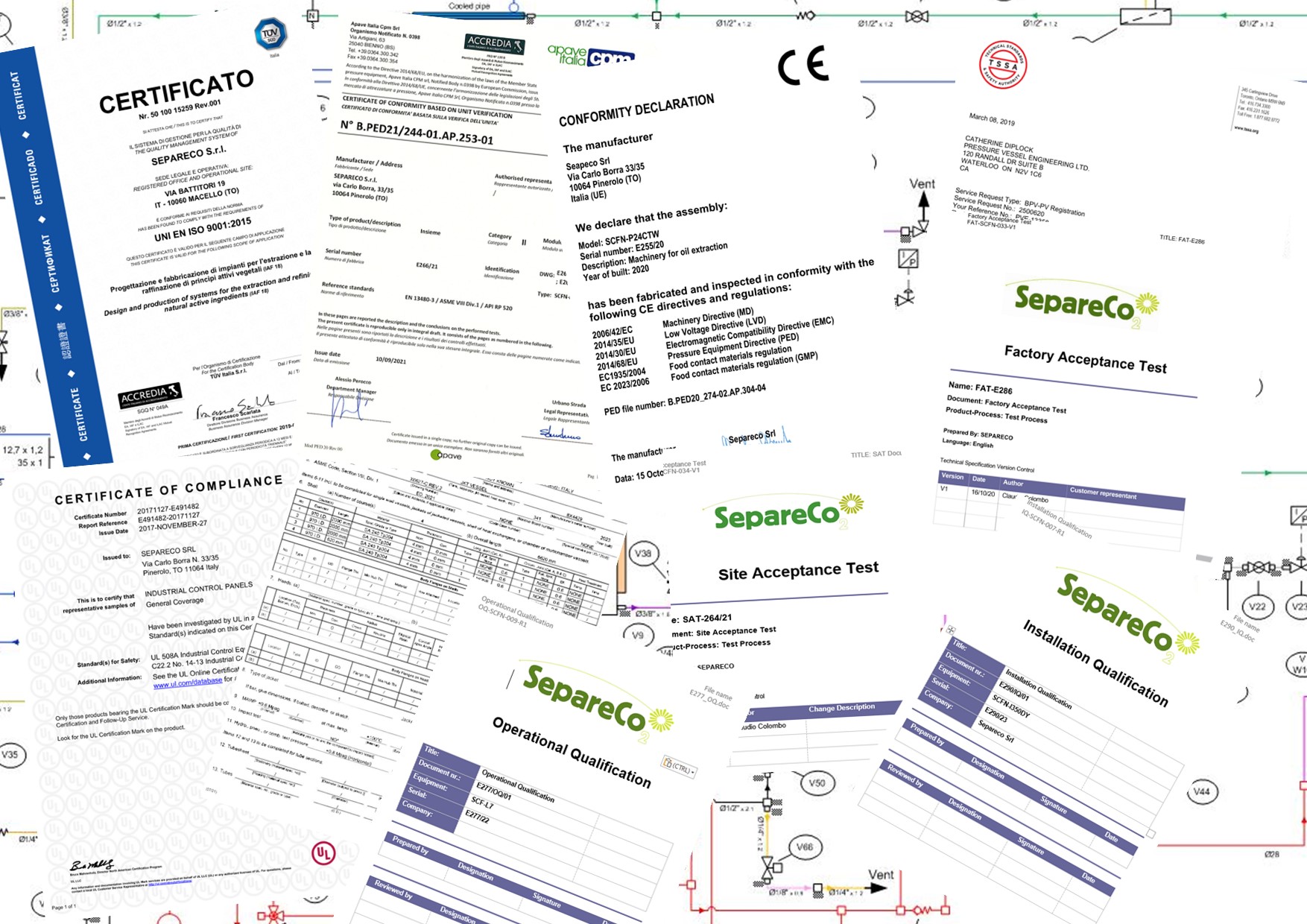Is supercritical CO2 extraction safe? The experts answer
Are you considering introducing processes for extracting certain chemical components from raw materials using supercritical CO2 extraction? Are you wondering if this is a safe process, especially given that industrial machines utilizing supercritical CO2 are certified? Or are you simply curious about the safety aspects associated with supercritical CO2 extraction and the certifications of various machine components?
Here’s an article that will address all your concerns!
Take a moment to read this article prepared by Separeco, an Italian company at the forefront of utilizing advanced technologies such as supercritical extraction. This technology has a significant impact on various sectors, including pharmaceuticals, food, and nutraceuticals, emphasizing how these technologies, based on highly compressed carbon dioxide, contribute to reduced environmental impact and cost savings.

Supercritical CO2 Extraction: The New Safe and Certified Technology
When it comes to safety, numerous aspects need consideration. Safety comes first, and the design of a supercritical CO2 system relies on a profound understanding of engineering and organic chemistry. However, this is not sufficient; extensive process experience is crucial to guide the design effectively.
Calculation codes assist engineers in correctly sizing every part of the machine, ensuring each component’s safety and ability to withstand CO2 pressure. Every part is certified by the manufacturer’s certifying body according to current regulations, even if these regulations vary worldwide. For instance, in Europe, the Pressure Equipment Directive (PED) directives apply, while in North America, the American Society of Mechanical Engineers (ASME) directives apply. Therefore, machines built and certified for North America cannot be used in Europe and vice versa.
Once all parts are assembled, the entire assembly undergoes certification by an independent certification company. This guarantees not only that all parts are designed and certified for required pressures but also that the machinery as a whole complies with international engineering directives. The certification company inspector doesn’t merely witness the verification test but follows the manufacturer from the initial draft of the Pipe and Instrument Diagram (P&ID), the project scheme describing how all individual parts connect. All these checks ensure the safety of the built machinery, protecting the operators who will use it.
Safety Technology Protecting Operator Position: SIL Certification
Beyond the engineering aspect ensuring good design and construction, along with the full ability of each part to effortlessly resist pressures, another critical aspect is considered during the design phase: operator position safety. Working with a high-pressure machine poses risks if the operator is not adequately considered.
Hence, the Machinery Directive (MD) describes every aspect the designer must consider to ensure operator safety under any circumstances. For instance, high-pressure pipes unprotected by steel shields near the operator’s position are deemed unacceptable. Risk analysis considers all possible known scenarios, verifying operator safety, which must be guaranteed in all cases. Machines meeting these operator safety criteria won’t display high-pressure pipes or fittings, as these are placed behind protective stainless steel shields. Anything unforeseen or unpredictable cannot compromise operator safety in any way.
Finally, the process control system deserves mention. On-board automation significantly mitigates risks to both the machine and the operator. SIL (Safety Integrity Level) level 3 certification, in particular, guarantees, without the possibility of failure, that if a risk situation occurs, the machine is immediately placed in an emergency state. This involves stopping the process, closing every valve, and isolating every part of the machine. Even the most experienced operator could become distracted and find themselves in a dangerous situation. The machine must recognize this possibility and immediately halt the process, securing itself and the operator. SIL 3 certified machinery is equipped with an additional PLC dedicated specifically to safety, supervising each activity and intervening in case of danger.
As demonstrated, supercritical CO2 extraction machines are safe and certified according to the highest international standards. Each machine component is designed and certified to be safe for the operator using the machine.
If you’ve decided to integrate this extraction technology into your industrial processes, don’t hesitate to contact us for personalized consultation. Our systems are tailored for the food, pharmaceutical, cosmetic, recycling, and plastics industries with customized projects.
